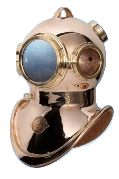BabyDuck
Contributor
i started with a back inflate, and when i saw my first underwater picture of myself, i knew i was going plate at the earliest opportunity. the bc shoulder straps were several *inches* off my shoulders. this was because as a 'hippy' (ok, chubby) woman, the cummerbund was snuggest high on my waist which gave lots of room to the shoulder straps, which couldn't be tightened any more than they were.
now i have my crotch strap snug and it keeps the belt low on my hips & the shoulder straps where they should be and the tank(s) rock steady.
but if you're happy, you're happy - don't change just to change. it's very much a 'ford/chevy' or 'hatchback/pickup' sort of discussion. what works for you is what you need.
now i have my crotch strap snug and it keeps the belt low on my hips & the shoulder straps where they should be and the tank(s) rock steady.
but if you're happy, you're happy - don't change just to change. it's very much a 'ford/chevy' or 'hatchback/pickup' sort of discussion. what works for you is what you need.




